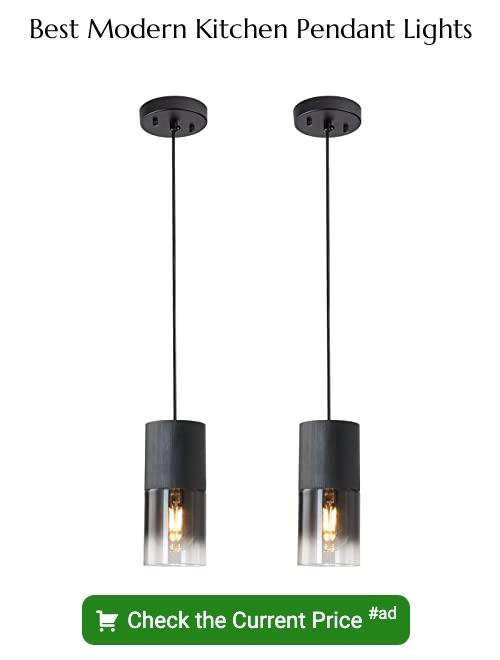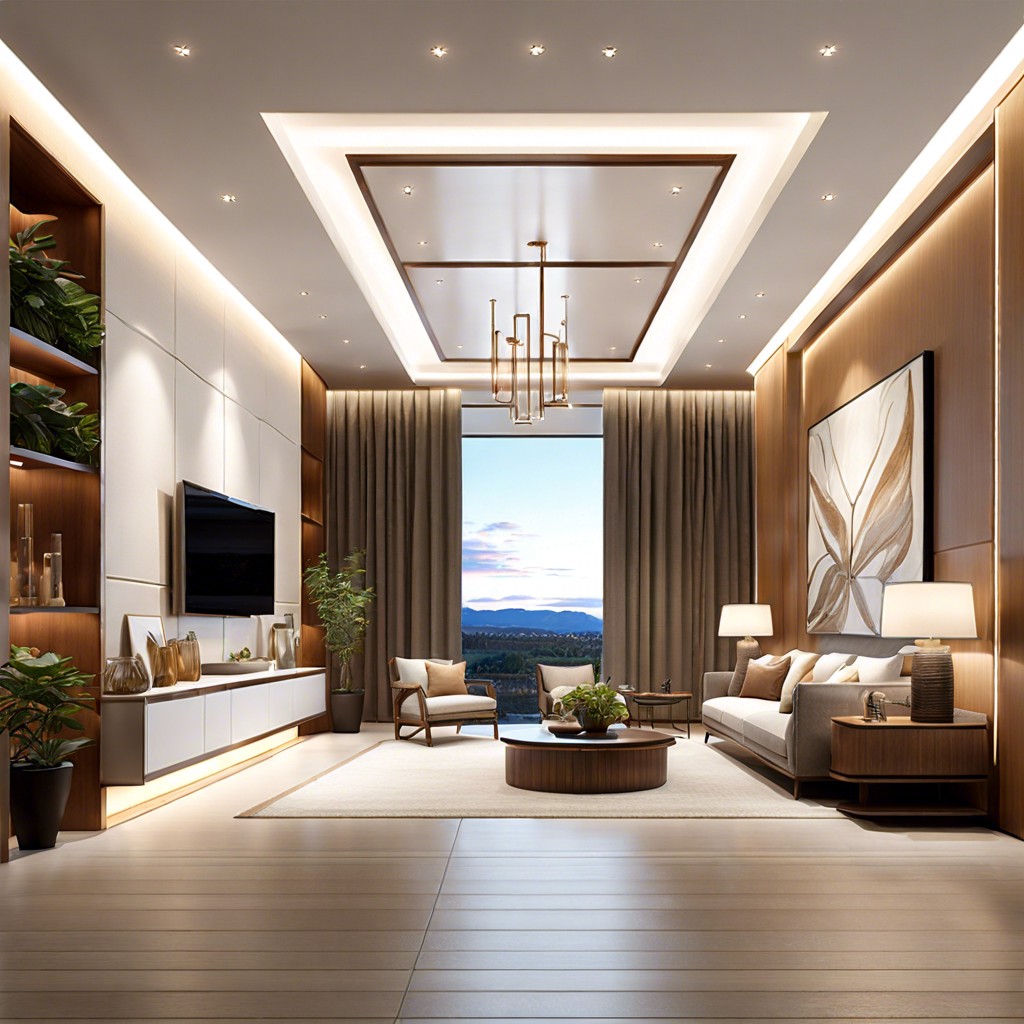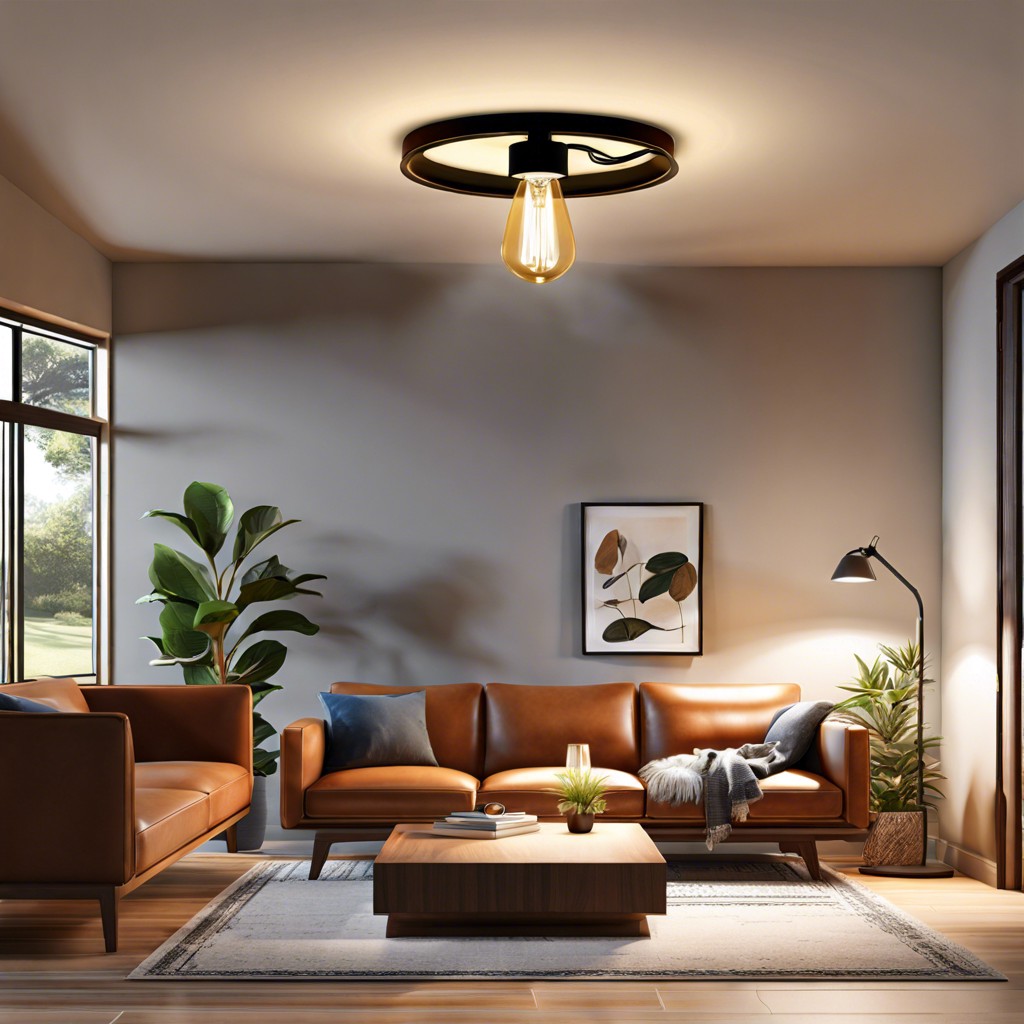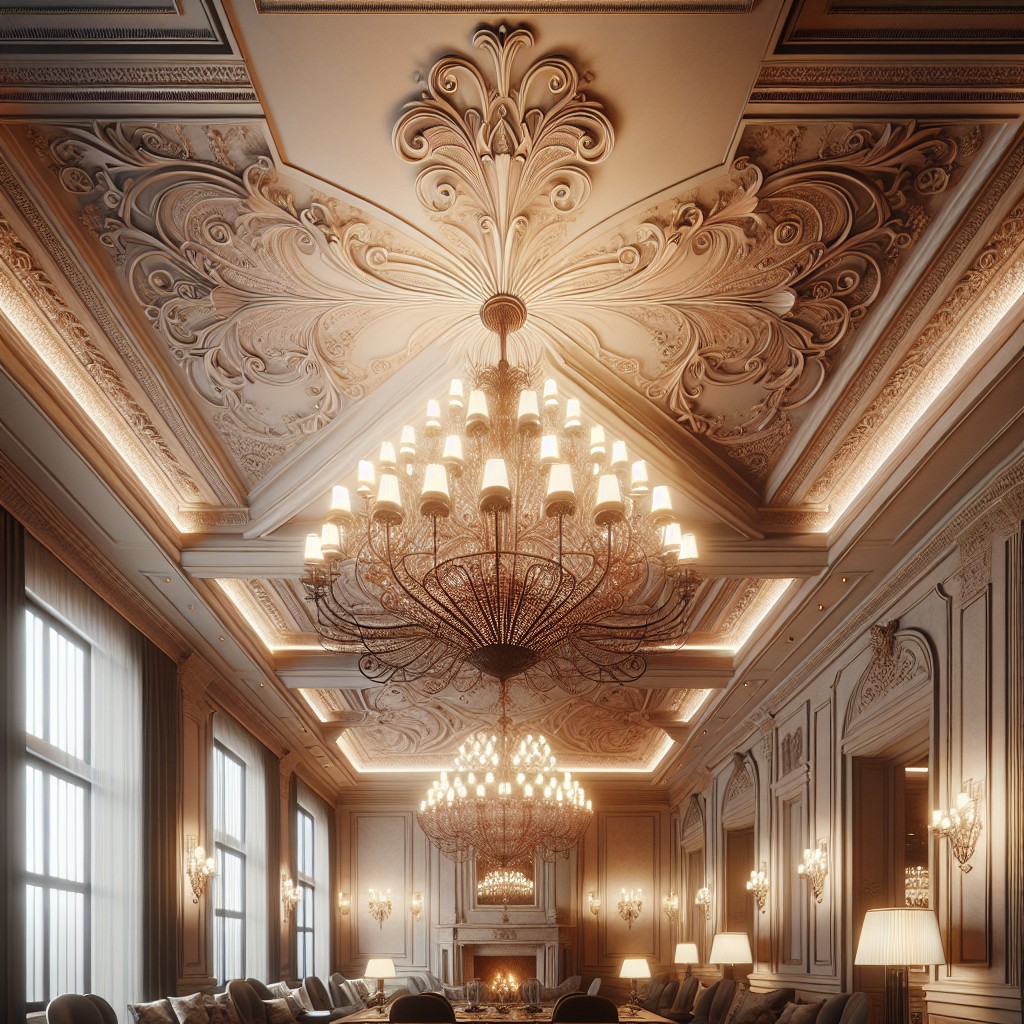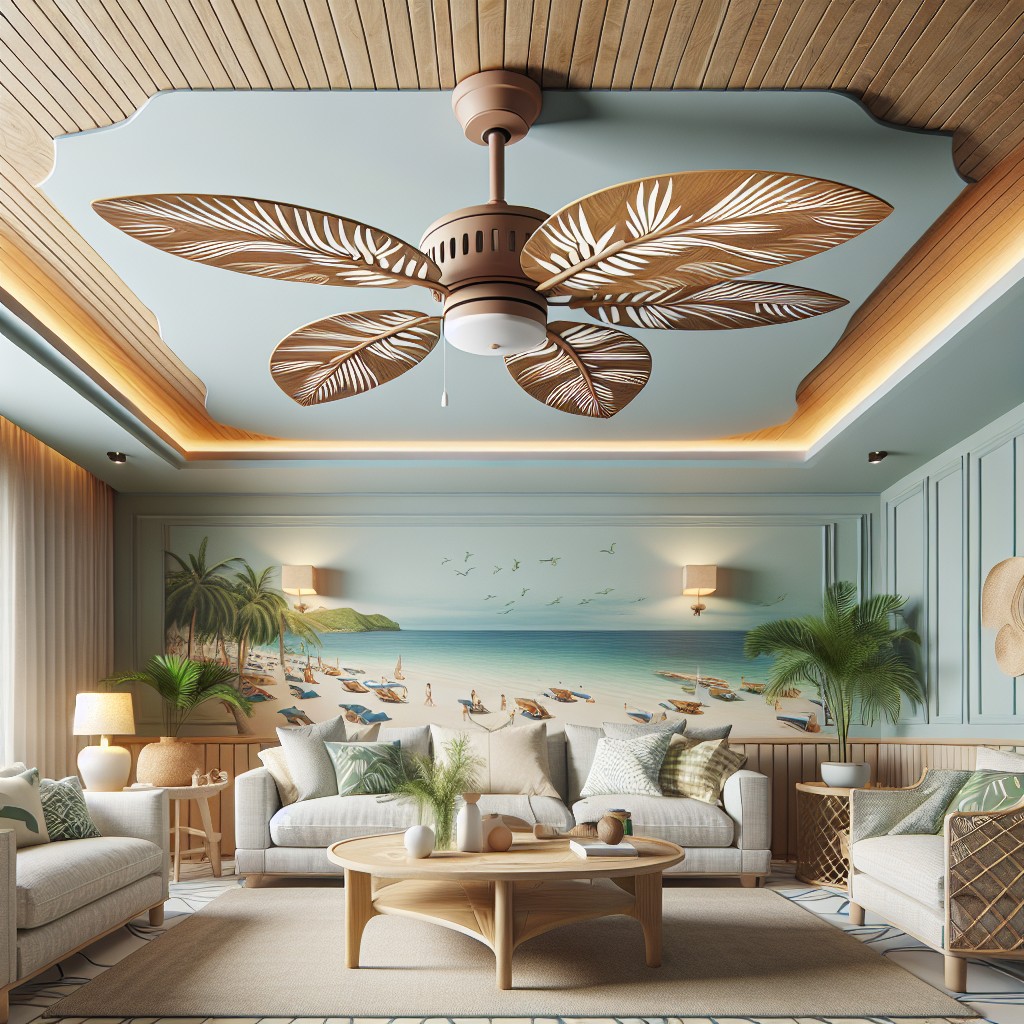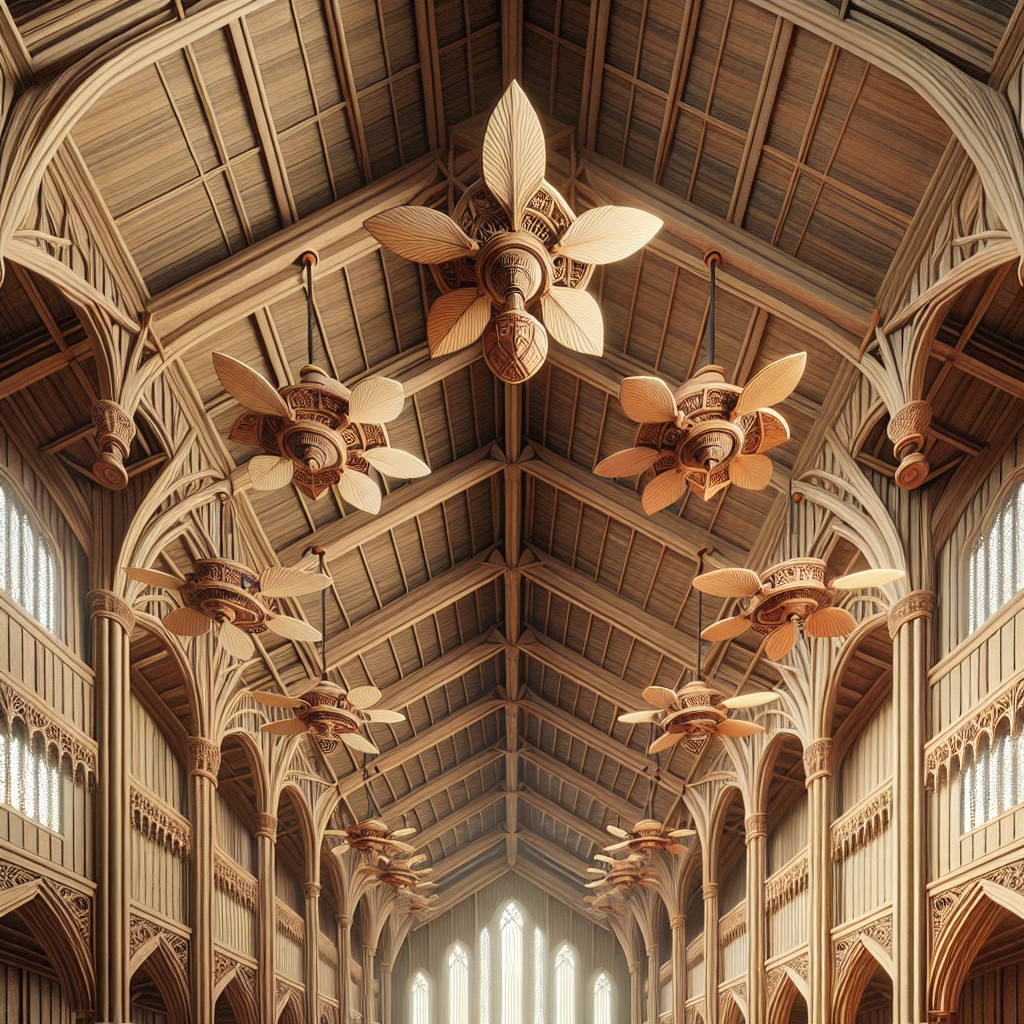Last updated on
Discover the ideal size for kitchen pendant lights to create a harmonious balance and enhance your cooking space’s aesthetics in this comprehensive guide.
Are you in the middle of a kitchen renovation and wondering how to choose the right pendant lights? Or maybe you’ve just moved into a new home and want to update your kitchen lighting. Whatever the reason, choosing the perfect pendant lights for your kitchen can be overwhelming.
One of the most important factors to consider is size. The size of your pendant lights can make or break your kitchen’s aesthetic appeal and functionality.
In this article, we’ll explore how big should kitchen pendant lights be to create an inviting and well-lit space that suits your needs.
What's Inside
Importance of Kitchen Pendant Lights

Kitchen pendant lights are an essential element of any modern kitchen design. They provide both functional and aesthetic benefits that can transform your cooking space into a warm, inviting, and well-lit area.
Pendant lights offer focused lighting over specific areas such as countertops or islands where you need more light for food preparation or dining.
Apart from their practical use, pendant lights also add style to your kitchen decor by creating a focal point that draws the eye upward. Pendant lighting fixtures come in various shapes, sizes, colors and materials to match different styles of kitchens – from traditional to contemporary designs.
Choosing the right size for your kitchen pendant light is crucial because it affects how much illumination you get in the room while complementing other elements like cabinets and appliances.
Factors to Consider for Size
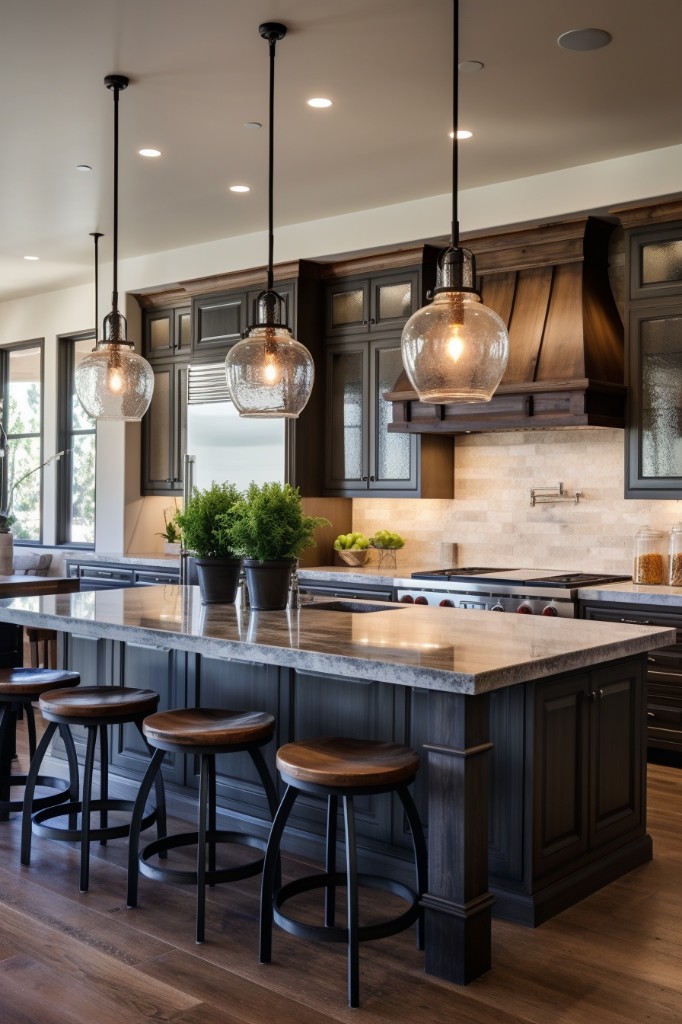
The first factor is the size of your kitchen island or countertop where you plan to install the lights. Pendant lights that are too small will look out of place and won’t provide enough light, while those that are too large can overwhelm a smaller space.
Another important consideration is ceiling height. If you have high ceilings, larger pendant lights may be more appropriate as they can fill up vertical space and create a dramatic effect.
On the other hand, if your ceilings are lower than average, smaller pendants may work better as they won’t overpower the room.
The style of your kitchen should also play a role in determining pendant light size. For example, if you have an industrial-style kitchen with exposed brick walls and metal accents, larger pendants with bold designs could complement this aesthetic well.
Lastly but not leastly – functionality! Consider how much lighting do you need? Do these fixtures serve only decorative purposes or will they be used for task lighting? Answering these questions will help determine what type of bulb wattage would best suit each fixture’s purpose in addition to its overall design aesthetics.
Standard Pendant Light Sizes
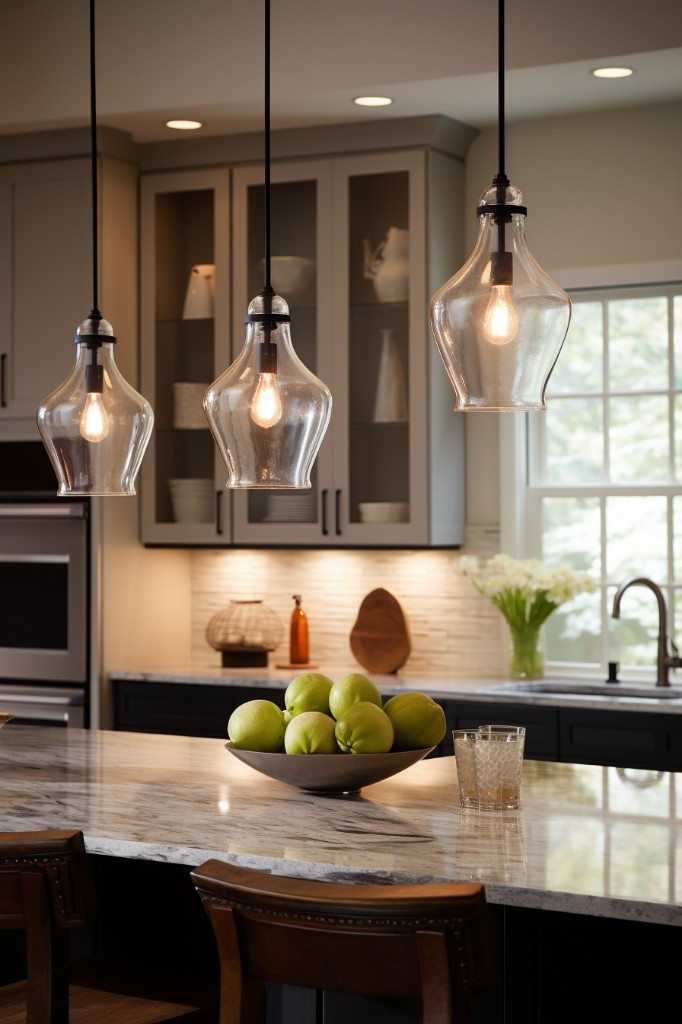
These sizes range from small to large and can be used in different areas of your kitchen. The most common size for a kitchen pendant light is between 18-24 inches in diameter, but this may vary depending on the size of your kitchen island or countertop.
If you have a smaller space or want to use multiple pendants, then consider using mini-pendant lights with diameters ranging from 4-10 inches. On the other hand, if you have a larger space and want to make a statement with one fixture, then consider using oversized pendant lights with diameters over 30 inches.
It’s important to note that these standard sizes are just guidelines and not set rules. You should always measure your space before purchasing any lighting fixtures so that they fit perfectly into your design plan.
Measuring Your Kitchen Space

Start by measuring the length and width of your island or countertop where you plan to install the pendant lights. If you have a large open-concept kitchen, consider measuring the entire area that needs lighting.
Once you have these measurements, use them as a guide when selecting pendant light sizes. Keep in mind that larger spaces may require bigger fixtures or multiple pendants for adequate illumination.
It’s also essential to consider other factors such as ceiling height and furniture placement when choosing pendant light sizes. A general rule of thumb is that if your ceiling is higher than 8 feet, opt for longer pendants with more substantial shades or multiple smaller ones instead of one large fixture.
Kitchen Pendant Light Size Guidelines
The first thing to consider is the size of your kitchen island or countertop where you plan to install the lights. As a general rule of thumb, each pendant light should be around 12-20 inches in diameter and spaced at least 30 inches apart from each other.
If you have a larger island or countertop, consider using multiple pendant lights instead of just one. For example, if your island is six feet long, two medium-sized pendants would work better than one large fixture.
Another factor that affects how big your kitchen pendant lights should be is ceiling height. If you have high ceilings (over nine feet), opt for longer fixtures that can fill up space without looking too small or out of place.
Determining the Ideal Pendant Light Height
The ideal height of your pendant lights will depend on various factors such as ceiling height, island or countertop dimensions, and personal preference.
As a general rule of thumb, most designers recommend hanging pendant lights 30-36 inches above the surface they are illuminating. This distance provides enough clearance for people to move around comfortably while ensuring that light is distributed evenly across the space.
However, if you have higher ceilings or want to create a dramatic effect with your lighting fixtures, you can hang them lower than this range. Just make sure that they don’t obstruct anyone’s view or interfere with daily activities in the kitchen.
Height and Spacing Guidelines
The ideal height for pendant lights above a kitchen island or countertop is typically between 28-36 inches from the surface. This range allows enough clearance for cooking activities while providing adequate lighting.
Spacing is also an important consideration when installing multiple pendant lights in a row over an island or countertop. A general rule of thumb is to space them approximately 24-30 inches apart, depending on their size and shape.
However, these guidelines may vary based on personal preference and specific kitchen design elements such as ceiling height, cabinet placement, and other light sources in the room.
It’s always best to consult with a professional electrician or interior designer before making any final decisions regarding your kitchen lighting layout.
Number of Pendant Lights Needed
A general rule is to have one pendant light for every two feet of countertop or island length. For example, if you have a six-foot-long island, three pendant lights would be ideal.
However, this guideline may not always apply in all situations. If you have a smaller kitchen with limited counter space or an open-concept design where the kitchen flows into other areas such as the dining room or living room, fewer pendants may be needed.
On the other hand, if your kitchen has high ceilings or large windows that let in natural light during the day but become dark at nightfall when artificial lighting is necessary to illuminate workspaces adequately; additional pendants can help fill any gaps and provide adequate task lighting.
Ultimately it’s important to consider both functionality and aesthetics when deciding on how many pendant lights are needed for your specific situation.
Island and Countertop Lighting
Pendant lights can be used to illuminate your kitchen island or countertop, creating an inviting atmosphere for cooking, dining, and entertaining guests. The size of the island or countertop will determine how many pendant lights you need and their placement.
For larger islands or countertops, multiple pendants may be necessary to provide adequate lighting coverage. In this case, consider using smaller-sized pendants that complement each other in style but vary slightly in shape or color for added visual interest.
If you have a smaller island or countertop space with limited room for multiple fixtures, one large statement piece can make all the difference. Choose a single oversized pendant light that complements your overall kitchen decor while providing ample illumination over the area.
When it comes to positioning your Island and Countertop Lighting fixtures correctly; ensure they are centered above the surface they are illuminating without interfering with any overhead cabinets’ functionality if present.
Pendant Light Materials
Pendant lights come in a variety of materials, including glass, metal, wood and fabric. Each material has its unique characteristics that can affect the overall look and feel of your kitchen.
Glass pendant lights are popular because they provide a sleek and modern look while allowing plenty of light to shine through. Metal pendants offer durability and versatility with various finishes such as brushed nickel or oil-rubbed bronze that can complement any decor style.
Wooden pendants add warmth and texture to space while fabric shades create softness with diffused lighting perfect for cozy kitchens.
Matching Pendant Lights to Kitchen Style
The right pendant light can complement and enhance the existing design elements in your kitchen. For example, if you have a modern or contemporary-style kitchen with clean lines and minimalistic features, choose pendant lights that are sleek and simple in design.
On the other hand, if you have a traditional-style kitchen with ornate details such as crown molding or decorative cabinetry hardware, opt for more intricate pendant light designs that feature embellishments like crystals or metalwork.
If you’re unsure about which style of lighting would work best in your space, consult an interior designer who can help guide you towards options that will match seamlessly with your current decor.
Remember: Your choice of lighting should not only be functional but also aesthetically pleasing.
Layering With Other Light Sources
That’s where layering comes in. Layered lighting involves using different types of light sources at varying levels to create a well-lit and inviting space.
To achieve this effect, consider adding under-cabinet lights or recessed ceiling fixtures that can illuminate the countertops and backsplash areas. These additional sources of light will help fill any gaps left by the pendant lights while creating a warm ambiance in your kitchen.
Another way to layer is by incorporating dimmer switches into your design plan. Dimmers allow you to adjust the brightness level according to your needs, making it easy for you to switch between bright task lighting during meal prep and softer ambient lighting when entertaining guests.
Single Vs. Multiple Pendant Lights
The choice between these two options depends on your personal preference and the size of your kitchen.
A single pendant light can be an excellent choice for smaller kitchens or if you want to highlight a specific area such as above the sink or breakfast bar. It can also create a minimalist look that is perfect for modern kitchens.
On the other hand, multiple pendant lights work well in larger kitchens with more counter space and islands. They provide better lighting coverage and add visual interest to space by breaking up large areas into smaller sections.
If you decide on using multiple pendants, consider spacing them evenly apart from each other while keeping in mind their height placement relative to one another so they don’t clash visually when viewed together.
Bulb Types and Brightness
LED bulbs are a popular choice because they are energy-efficient, long-lasting, and come in various color temperatures to suit different preferences. Halogen bulbs produce bright light but consume more energy than LEDs.
Incandescent bulbs have been phased out due to their low efficiency.
When it comes to brightness, consider the purpose of your kitchen lighting. If you use your kitchen primarily for cooking or food preparation, brighter lights may be necessary to ensure adequate visibility while chopping vegetables or reading recipes.
On the other hand, if you use your kitchen as a gathering spot for family meals or entertaining guests, dimmer lights can create a cozy atmosphere.
Installation Tips and Tricks
While installation may seem like a daunting task, with the right tools and knowledge, it can be a breeze. Here are some installation tips and tricks to help you get started:
1. Turn off power: Before beginning any electrical work, make sure to turn off the power at your home’s circuit breaker.
2. Measure carefully: Use a measuring tape or ruler to ensure that each pendant light is hung at an equal distance from one another.
3. Hang at correct height: Pendant lights should hang 30-36 inches above countertops or tables for optimal lighting.
4. Use appropriate hardware: Make sure that you use hardware suitable for the weight of your pendant lights when installing them on ceilings or walls.
5. Hire an electrician if needed: If you’re not comfortable working with electricity or don’t have experience in electrical work, consider hiring a licensed electrician instead of attempting DIY installation yourself.
Budget Considerations
The cost of pendant lights can vary significantly depending on their size, material quality and design complexity. If you’re working with a tight budget but still want to add some style and functionality to your kitchen lighting scheme, consider shopping around for affordable yet stylish options.
One way to save money is by purchasing pendant light fixtures that come in sets or packs rather than buying individual pieces. You can also look out for sales or discounts offered by retailers both online and offline.
Another option is opting for DIY projects where you can create your own unique designs using inexpensive materials such as wire baskets or mason jars. This not only saves money but also adds a personal touch that reflects your personality.
Remember that while it’s important to stick within your budget when choosing kitchen pendant lights, don’t compromise on quality just because of price considerations.
Energy Efficiency
Opting for LED bulbs can save you money on your electricity bill in the long run while reducing your carbon footprint. LED bulbs use less energy than traditional incandescent or fluorescent bulbs and last much longer, making them a more sustainable choice.
Another way to increase energy efficiency is by installing dimmer switches that allow you to adjust the brightness of your pendant lights according to different needs throughout the day. This not only saves power but also creates a cozy ambiance during dinner parties or movie nights.
When shopping for kitchen pendant lights, look for Energy Star certified products that meet strict guidelines set by the U.S Environmental Protection Agency (EPA) regarding quality and performance standards. These products are designed with advanced technology that maximizes energy savings without sacrificing style or functionality.
Maintenance and Cleaning
Over time, dust, grease, and other debris can accumulate on the surface of your pendant lights. This buildup not only affects their appearance but also reduces their brightness.
To keep your kitchen pendant lights looking great and functioning correctly for years to come, regular cleaning is necessary. The frequency of cleaning depends on how often you use the light fixtures in your kitchen.
For general maintenance purposes:
- Turn off power supply before cleaning
- Use a soft cloth or sponge with mild soap solution
- Avoid using abrasive cleaners or scrubbers that may scratch surfaces
- Dry thoroughly after washing
If there are stubborn stains or grime build-up:
- Mix equal parts vinegar (or lemon juice) with water.
- Dip a soft cloth into this mixture.
- Wipe gently over stained areas until they disappear completely.
- Rinse thoroughly with warm water afterward.
Latest Trends in Kitchen Lighting
Keeping up with the latest styles can help you create a modern and stylish space that reflects your personality. One of the most popular trends in kitchen lighting is incorporating natural materials such as wood, rattan or bamboo into pendant light designs to add warmth and texture to your space.
Another trend gaining popularity is using oversized pendant lights for a dramatic effect over an island or dining table. These statement pieces not only provide ample illumination but also serve as eye-catching focal points in the room.
In terms of finishes, matte black remains a top choice for its sleek and sophisticated look while brass has made a comeback due to its timeless appeal. Mixing metals like copper and gold adds depth and interest to your overall design scheme.
Smart technology has revolutionized kitchen lighting by allowing homeowners to control their lights remotely through voice commands or mobile apps. This feature provides convenience while also saving energy by turning off unused lights automatically.
FAQ
How long should a kitchen pendant light be?
A kitchen pendant light should generally hang 12 to 20 inches below an 8-foot ceiling, with an additional 3 inches for each extra foot of ceiling height.
How big should a pendant light be over kitchen sink?
A pendant light over a kitchen sink should be at least 6 inches for most sinks and up to 12 inches for large farmhouse sinks, ensuring the scale of the lighting matches the scale of the sink.
How wide should kitchen pendant lights be?
The width of kitchen pendant lights should be approximately half the width of the actual island, so for a 3-feet-wide island, the light fixture should be about 15"-18" wide.
How do I choose the right size pendant light?
To choose the right size pendant light, multiply the room’s height by 2.5 and 3 to obtain a range of ideal pendant heights.
What is the ideal height to hang kitchen pendant lights above countertops?
The ideal height to hang kitchen pendant lights above countertops is 30 to 36 inches from the countertop surface.
How should the size of a pendant light relate to the size of a kitchen island?
The size of a pendant light should ideally be around 1/2 to 2/3 the width of the kitchen island for optimal balance and aesthetics.
Can multiple pendant lights be used in a kitchen space, and how should they be spaced?
Yes, multiple pendant lights can be used in a kitchen space and they should be spaced approximately 30 inches apart for optimal lighting and visual appeal.
